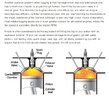JohanH
New Member
I recently purchased a 2015 NC750X
After riding the bike a few times, I have noticed that it vibrates and is a bit sluggish around 2000-2500 rpm. If I shift down, there is no problem, it runs fine and gives good and fast acceleration. But when I ride the bike in any gear around 2000-2500 rpm the engine does not respond smoothly and it "begs me" from the engine sound to downshift.
Is this a normal Honda NC750X feature, or is it a problem?
After riding the bike a few times, I have noticed that it vibrates and is a bit sluggish around 2000-2500 rpm. If I shift down, there is no problem, it runs fine and gives good and fast acceleration. But when I ride the bike in any gear around 2000-2500 rpm the engine does not respond smoothly and it "begs me" from the engine sound to downshift.
Is this a normal Honda NC750X feature, or is it a problem?



